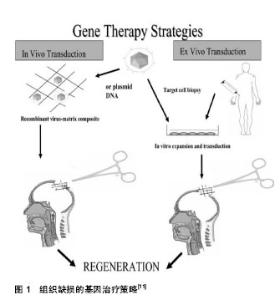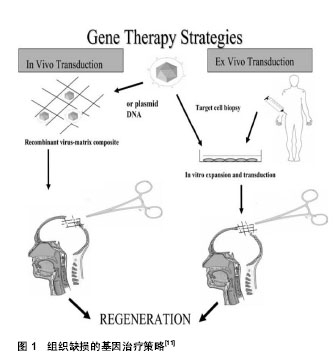| [1] Hao J, Varshney RR, Wang DA.Engineering osteogenesis and chondrogenesis with gene-enhanced therapeutic cells. Curr Opin Mol Ther. 2009;11(4):404-410.
[2] He F, Yang Z,Tan Y.[Odontogenesis of Delta1 gene transfected human dental pulp stem cells]. Zhongguo Xiu Fu Chong Jian Wai Ke Za Zhi.2007;21(10):1133-1136.
[3] Edwards PC,Mason JM.Gene-enhanced tissue engineering for dental hard tissue regeneration: (1) overview and practical considerations. Head Face Med. 2006;2:12.
[4] Lü K, Zeng D, Zhang Y, et al.BMP-2 gene modified canine bMSCs promote ectopic bone formation mediated by a nonviral PEI derivative. Ann Biomed Eng. 2011;39(6):1829-1839.
[5] Karen KA, Deal C, Adams RJ, et al.A replicating adenovirus capsid display recombinant elicits antibodies against Plasmodium falciparum sporozoites in Aotus monkeys. Infect Immun. 2015;83(1):268-275.
[6] Sheoran AS, Dmitriev IP, Kashentseva EA, Cohen O, et al.Adenovirus vector expressing Stx1/2-neutralizing agent protects piglets infected with E. coli O157:H7 against fatal systemic intoxication. Infect Immun. 2014.
[7] Xu M, Li M, Yang J, et al.[Adenovirus-mediated interleukin-24 enhances the inhibitory effect of paclitaxel on the growth of lung cancer A549 cells]. Xi Bao Yu Fen Zi Mian Yi Xue Za Zhi. 2014;30(11):1150-1153.
[8] Anjos-Afonso F, Bonnet D. Prospective identification and isolation of murine bone marrow derived multipotent mesenchymal progenitor cells. Best Pract Res Clin Haematol. 2011;24(1):13-24.
[9] Sugiyama G, Okabe Y, Ishida Y, et al. Evaluation of endoscopic biliary stenting for obstructive jaundice caused by hepatocellular carcinoma. World J Gastroenterol. 2014;20(22): 6968-6973.
[10] Tober R, Banki Z, Egerer L, et al.VSV-GP: a potent viral vaccine vector that boosts the immune response upon repeated applications. J Virol. 2014;88(9):4897-4907.
[11] Franceschi RT, Yang S, Rutherford RB, et al. Gene therapy approaches for bone regeneration. Cells Tissues Organs. 2004; 176:95-108.
[12] Partridge K, Yang X, Clarke NM,et al.Adenoviral BMP-2 gene transfer in mesenchymal stem cells: in vitro and in vivo bone formation on biodegradable polymer scaffolds. Biochem Biophys Res Commun.2002;292(1):144-152.
[13] Shin JH, Kim KH, Kim SH, et al.Ex vivo bone morphogenetic protein-2 gene delivery using gingival fibroblasts promotes bone regeneration in rats. J Clin Periodontol.2010;37(3): 305-311.
[14] Ghasemi N, Rahimi S, Lotfi M, et al.Effect of Mineral Trioxide Aggregate, Calcium-Enriched Mixture Cement and Mineral Trioxide Aggregate with Disodium Hydrogen Phosphate on BMP-2 Production. Iran Endod J. 2014;9(3): 220-224.
[15] Naghdi P, Tiraihi T, Ganji F, et al.Survival, proliferation and differentiation enhancement of neural stem cells cultured in three-dimensional polyethylene glycol-RGD hydrogel with tenascin. J Tissue Eng Regen Med. 2014 Oct 13.
[16] Lentz TB, Samulski RJ.Insight into the Mechanism of Inhibition of Recombinant Adeno-Associated Virus by the Mre11/Rad50/Nbs1 Complex. J Virol. 2015;89(1):181-194.
[17] Postrach J, Schmidt M, Thormann M, et al.Adeno-associated viral vector 2.9 thymosin ss4 application attenuates rejection after heart transplantation: results of a preclinical study in the pig. Transplantation. 2014;98(8):835-843.
[18] Ye GJ, Scotti MM, Thomas DL, et al.Herpes Simplex Virus Clearance During Purification of a Recombinant Adeno-Associated Virus Serotype 1 Vector. Hum Gene Ther Clin Dev. 2014;25(4):212-217.
[19] Jazwa A, Tomczyk M, Taha HM, Hytonen E,et al, Arteriogenic therapy based on simultaneous delivery of VEGF-A and FGF4 genes improves the recovery from acute limb ischemia. Vasc Cell. 2013;5:13.
[20] Tu SP, Cui JT, Liston P, .et al.Gene therapy for colon cancer by adeno-associated viral vector-mediated transfer of survivin Cys84Ala mutant. Gastroenterology.2005; 128(2):361-375.
[21] Asavarut P, O'Neill K, Syed N, et al.Chimeric adeno-associated virus and bacteriophage: a potential targeted gene therapy vector for malignant glioma. Ther Deliv.2014;5(9):975-990.
[22] da Silva DV, Nordholm J, Dou D,et al.The influenza NA protein transmembrane and head domains have co-evolved. J Virol. 2015;89(2):1094-1104.
[23] Zhang, Z.S, et al, Neutralizing antibodies respond to a bivalent dengue DNA vaccine or/and a recombinant bivalent antigen. Mol Med Rep. 2015;11(2):1009-1016.
[24] Chen Y, Luk KD, Cheung KM, et al.Combination of adeno-associated virus and adenovirus vectors expressing bone morphogenetic protein-2 produces enhanced osteogenic activity in immunocompetent rats. Biochem Biophys Res Commun. 2004;317(3):675-681.
[25] Yang M, Ma QJ, Dang GT, et al.Adeno-associated virus-mediated bone morphogenetic protein-7 gene transfer induces C2C12 cell differentiation into osteoblast lineage cells.Acta Pharmacol Sin. 2005;26(8):963-968. |

